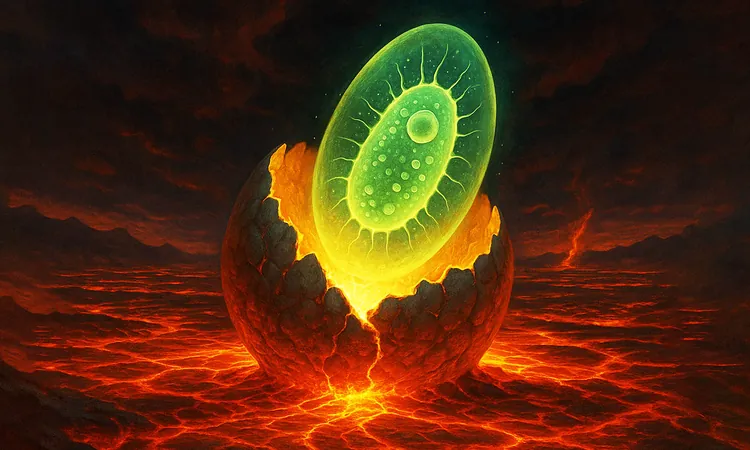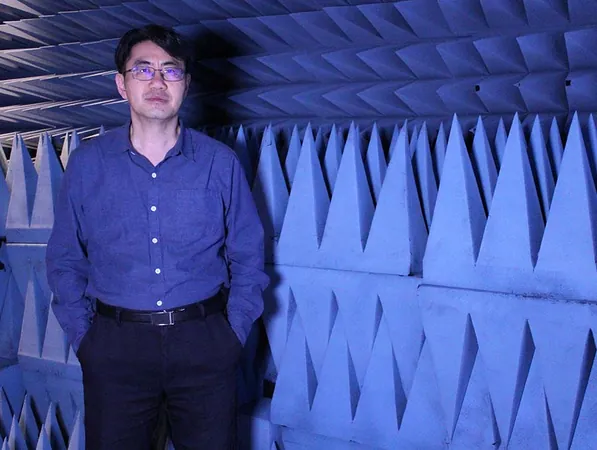
Meet LUCA: The Ancestral Superhero of All Life on Earth!
2025-04-18
Author: Daniel
Every leaf on a plant, the feather of an eagle, and even the tiniest bacteria share a common language made up of just four DNA letters. This genetic code is read by ribosomes, which assemble amino acids and utilize energy currency known as ATP. But with such remarkable uniformity, one burning question remains: who wrote the first chapter of life's story?
Introducing LUCA: The Ultimate Ancestor
Enter LUCA—Last Universal Common Ancestor—a pivotal organism that once straddled the divide between Bacteria and Archaea. Its existence raises intriguing insights into how life diverged and evolved.
Dr. Edmund Moody from the University of Bristol leads a team of researchers who combed through thousands of genomes to trace this ancestral lineage. They discovered around 2,600 genes, suggesting LUCA was far more complex than previously thought.
LUCA’s Genetic Treasure Trove
So what exactly did this ancient organism possess? Contrary to past assumptions, LUCA wasn’t just a minimal genetic entity. Among its trove of genes were tools for membrane functions, DNA repair, and even biochemistry pathways essential for energy production—a self-sufficient cell thriving under early Earth conditions.
It appears LUCA was quick to adapt, ready to explore new possibilities once the planet cooled enough to support liquid water.
A Titanic Timeline
Through a detailed analysis of gene changes over time, researchers estimate LUCA emerged about 4.2 billion years ago—just a few hundred million years post-Earth's formation. Dr. Sandra Álvarez-Carretero remarks on the surprising timing, aligning neatly with current theories regarding early Earth's habitability.
Life in Extreme Conditions
Imagine a world littered with asteroid impacts and volcanic eruptions, yet teeming with life around hydrothermal vents—warm, mineral-rich oases in the oceans. These vents may have played a crucial role in fueling LUCA’s metabolic processes.
The Evolution of Defense
Interestingly, LUCA wasn’t just a genetic marvel; it also likely had an early immune system. Professor Davide Pisani emphasizes that this organism was evidently engaged in a biological arms race with viruses, as evidenced by genes resembling today’s CRISPR defenses.
An Ecosystem in the Making
LUCA likely didn’t operate in isolation. Its byproducts would have provided essential nutrients for other microbes. As Tim Lenton from the University of Exeter points out, just like modern hydrothermal systems, these ancient communities might have formed an intricate recycling ecosystem.
Why Study LUCA?
The implications of understanding LUCA stretch far beyond curiosity; they could influence our understanding of prokaryotic evolution and the ecosystems that emerged afterward. Combining insights from various scientific disciplines, the research reveals how rapidly ecosystems appeared on early Earth, raising the tantalizing possibility that life could also exist elsewhere in the universe.
What Lies Ahead?
As scientists continue to explore untouched seafloor vents and study ancient microbial DNA, the picture of LUCA is gradually becoming clearer. The story of life on Earth is still revealing itself, but one thing is certain: life didn't simply emerge; it burst forth, fully equipped and ready for the challenges ahead.


 Brasil (PT)
Brasil (PT)
 Canada (EN)
Canada (EN)
 Chile (ES)
Chile (ES)
 Česko (CS)
Česko (CS)
 대한민국 (KO)
대한민국 (KO)
 España (ES)
España (ES)
 France (FR)
France (FR)
 Hong Kong (EN)
Hong Kong (EN)
 Italia (IT)
Italia (IT)
 日本 (JA)
日本 (JA)
 Magyarország (HU)
Magyarország (HU)
 Norge (NO)
Norge (NO)
 Polska (PL)
Polska (PL)
 Schweiz (DE)
Schweiz (DE)
 Singapore (EN)
Singapore (EN)
 Sverige (SV)
Sverige (SV)
 Suomi (FI)
Suomi (FI)
 Türkiye (TR)
Türkiye (TR)
 الإمارات العربية المتحدة (AR)
الإمارات العربية المتحدة (AR)